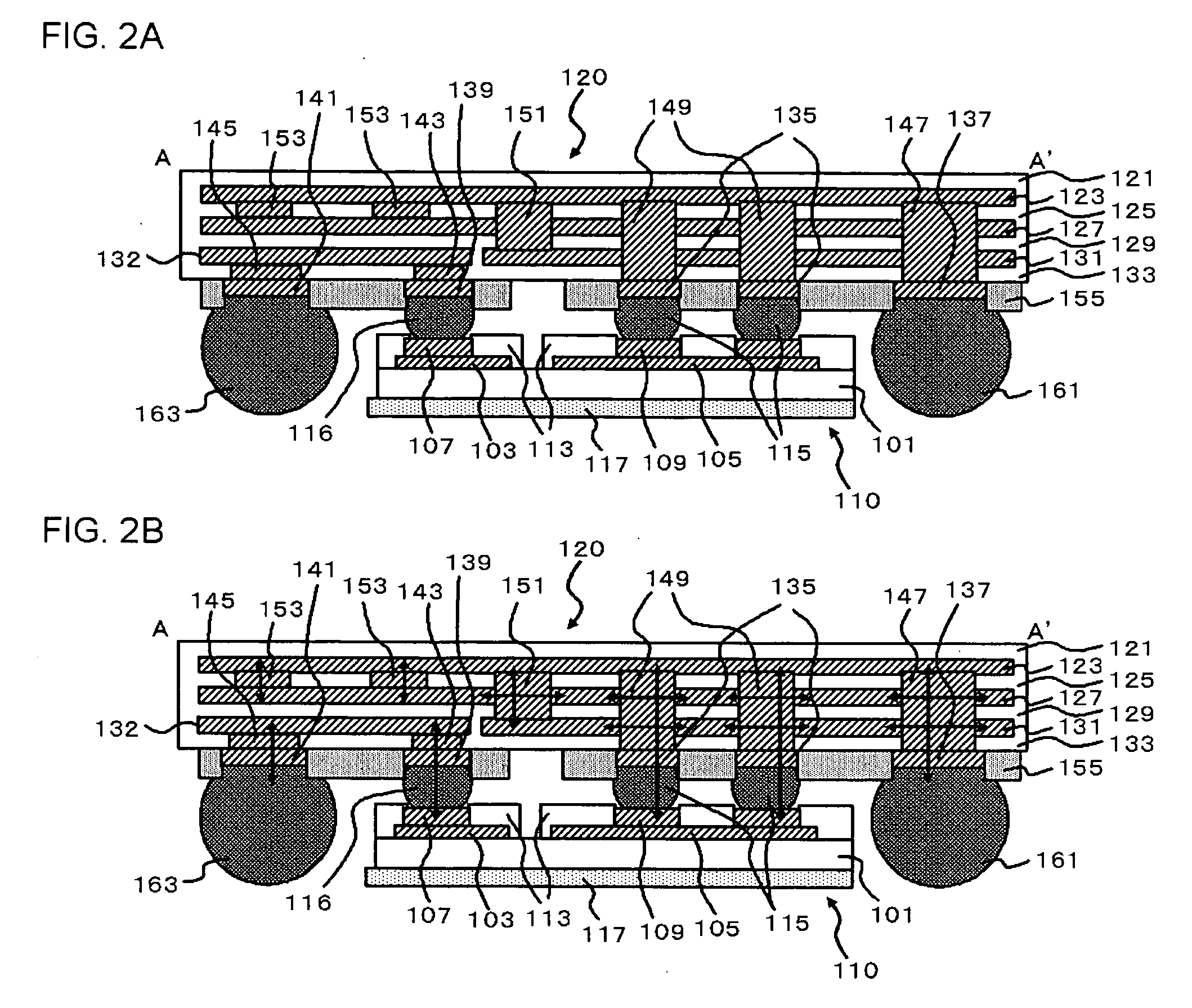Semiconductor device
a technology of semiconductor chips and semiconductor chips, applied in semiconductor devices, semiconductor/solid-state device details, electrical apparatus, etc., can solve the problems of easy degradation of the region in the vicinity of the front surface, the inability of the semiconductor chip to suitably follow the thermal expansion or thermal shrinkage of etc., to achieve the reduction of the linear expansion coefficient between the substrate of the semiconductor chip and the printed circuit board, the effect of improving heat resistan
- Summary
- Abstract
- Description
- Claims
- Application Information
AI Technical Summary
Benefits of technology
Problems solved by technology
Method used
Image
Examples
first embodiment
[0027]FIG. 1 is a perspective view, showing a configuration of a semiconductor device according to the present embodiment. FIG. 2A is a cross-sectional view of the semiconductor device along line A-A′ shown in FIG. 1. It should be noted that FIG. 2A shows the semiconductor device shown in FIG. 1 in a condition of being flipped.
[0028] The semiconductor device 100 shown in FIG. 1 and FIG. 2A includes an insulating substrate (ceramic multiple-layered interconnect substrate 120), a semiconductor chip (silicon chip 110) that is flip-bonded to a chip-carrying region of the ceramic multiple-layered interconnect substrate 120, and external mounting terminals (external connecting bumps 161), which are provided in the side that the silicon chip 110 of the ceramic multiple-layered interconnect substrate 120 is carried.
[0029] The silicon chip 110 includes front surface electrodes (second front surface electrodes 109) that are provided in the element formation surface of the silicon chip 110 a...
second embodiment
[0084] While the descriptions in first embodiment are related to the configuration, in which the external mounting terminal provided on the ceramic multiple-layered interconnect substrate 120 is the bump, and this bump is provided on the carrying surface for the silicon chip 110 in the ceramic multiple-layered interconnect substrate 120, The external mounting terminal may be provided in the side that the semiconductor chip of the ceramic multiple-layered interconnect substrate 120 is carried. For example, a conductive member may be exposed in the lower surface of the ceramic multiple-layered interconnect substrate 120, and the exposed surface may be utilized as an external mounting terminal.
[0085]FIG. 8 is a cross-sectional view, illustrating a configuration of a semiconductor device according to the present embodiment. FIG. 8 presents a view from the same direction as in FIG. 2A. A basic configuration of a semiconductor device 140 shown in FIG. 8 is similar to that of the semicond...
PUM
| Property | Measurement | Unit |
|---|---|---|
| thickness | aaaaa | aaaaa |
| thickness | aaaaa | aaaaa |
| thickness | aaaaa | aaaaa |
Abstract
Description
Claims
Application Information
 Login to View More
Login to View More - R&D
- Intellectual Property
- Life Sciences
- Materials
- Tech Scout
- Unparalleled Data Quality
- Higher Quality Content
- 60% Fewer Hallucinations
Browse by: Latest US Patents, China's latest patents, Technical Efficacy Thesaurus, Application Domain, Technology Topic, Popular Technical Reports.
© 2025 PatSnap. All rights reserved.Legal|Privacy policy|Modern Slavery Act Transparency Statement|Sitemap|About US| Contact US: help@patsnap.com



